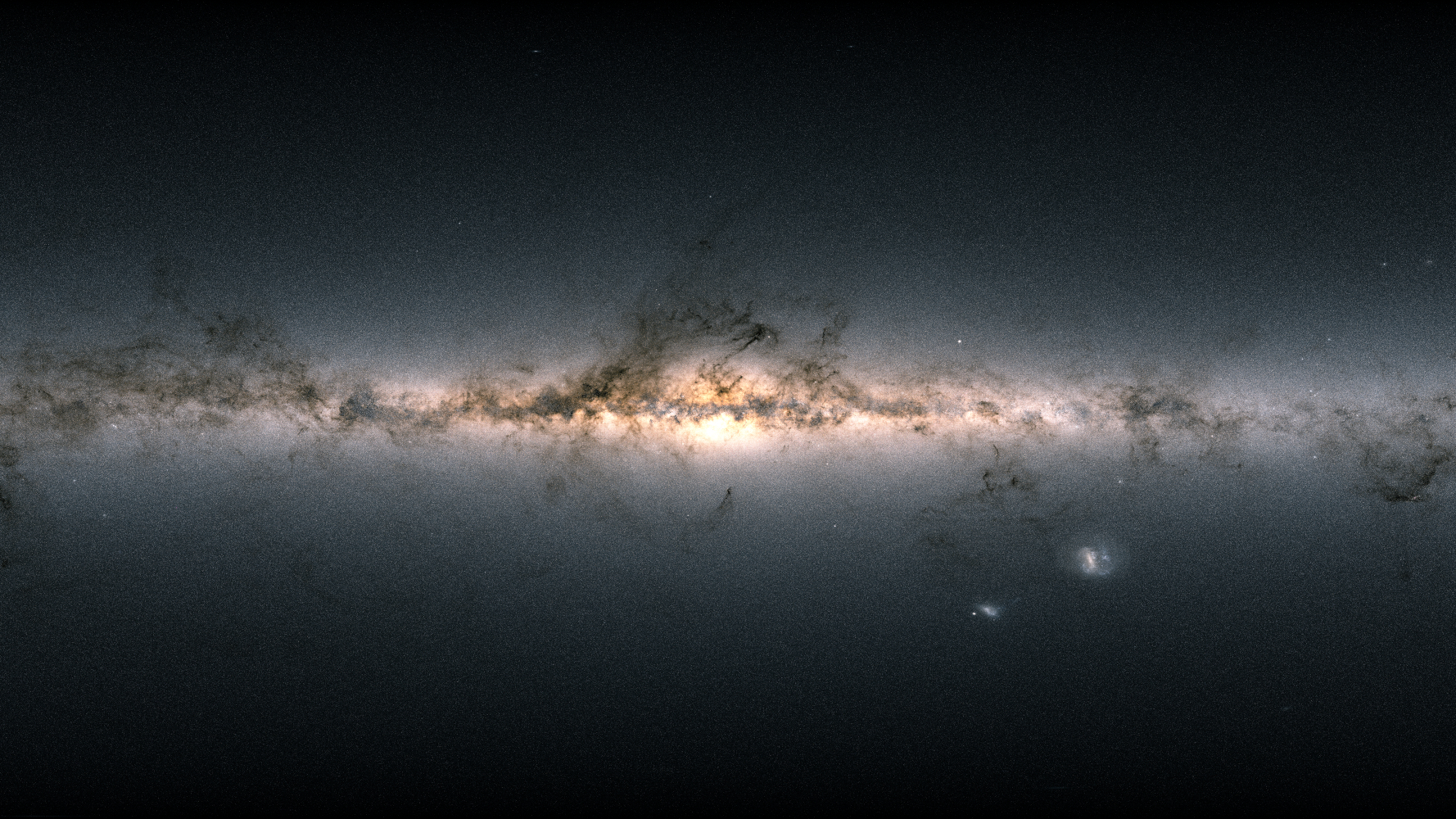
Stars have been caught crawling around the outskirts of the Milky Way more sluggishly than expected, a slow motion that scientists say can only be explained if our dark matter galaxy map is wrong.
Specific Velocities of stars around the edges of galaxies have historically been dead giveaways for the presence of dark matter in those galaxies. This is because astronomers can measure a galaxy's "rotation curve," which charts the orbital velocities of stars against their distances from the center of a galaxy.
If no dark matter were present (and hence the gravitational influence it offers) were absent, stars would begin to slow down the farther they orbit from the center of a galaxy. Instead, however, in the 1960s and early 1970s, astronomers Vera Rubin and Kent Ford noticed that the rotation curves of galaxies were flat. In other words, the orbital motion of stars did not drop off with distance. They maintained pace. The explanation for this, scientists believe, is that galaxies are ensconced within haloes of dark matter. These haloes are thought to be densest at the center of the galaxy; it is the gravity from this dark matter that keeps stars moving.
Related: How the songs of stars can help perfect Gaia's sweeping map of our galaxy
But here's the thing — because we sit inside our galaxy, and lack a bird's eye view of it, measuring the rotation curve of our Milky Way has proven more difficult.
What is needed is accurate distance information so that we know how far from the galactic center various outlying stars are. In 2019, Anna-Christina Eilers of the Massachusetts Institute of Technology (MIT) led a research team that used the European Space Agency's star-measuring Gaia mission to chart the orbital velocities of stars out to 80,000 light-years from the galactic center.As expected, the researchers found a flat rotation curve with only the merest hint of a decline in velocity for only the outermost stars in that sample.
However, new results that combine Gaia measurements with those from APOGEE (Apache Point Observatory Galactic Evolution Experiment), performed on a ground-based telescope in New Mexico, USA, and which measures the physical properties of stars to better judge their distance, have indeed measured the Milky Way's rotation curve for stars out farther than ever before, to about 100,000 light years.
"What we were really surprised to see was that this curve remained flat, flat, flat out to a certain distance, and then it started tanking," sLina Necib, who is an assistant professor of physics at MIT, said in a statement. "This means the outer stars are rotating a little slower than expected, which is a very surprising result."
"At these distances, we're right at the edge of the galaxy where stars start to peter out," added MIT's Anna Frebel in the same statement. "No one had explored how matter moves around in this outer galaxy, where we’re really in the nothingness."
The decline in orbital velocity at these distances implies that there is less dark matter in the center of our galaxy than expected. The research team describe the galaxy's halo of dark matter as having been "cored," somewhat like an apple. The crew also says there's not enough gravity from what dark matter there seems to exist there, to reach all the way out to 100,000 light years and keep stars moving at the same velocity.
"This puts this result in tension with other measurements," said Necib. "There is something fishy going on somewhere, and it’s really exciting to figure out where that is, to really have a coherent picture of the Milky Way."
The next step, says Necib, is to employ high-resolution computer simulations to model different distributions of dark matter within our galaxy to see which best replicates the falling rotation curve. Models of galaxy formation could then try to explain how the Milky Way galaxy arrived at its specific, cored-out distribution of dark matter — and why other galaxies didn't that.
The findings were published on Jan. 8 in the journal Monthly Notices of the Royal Astronomical Society.







